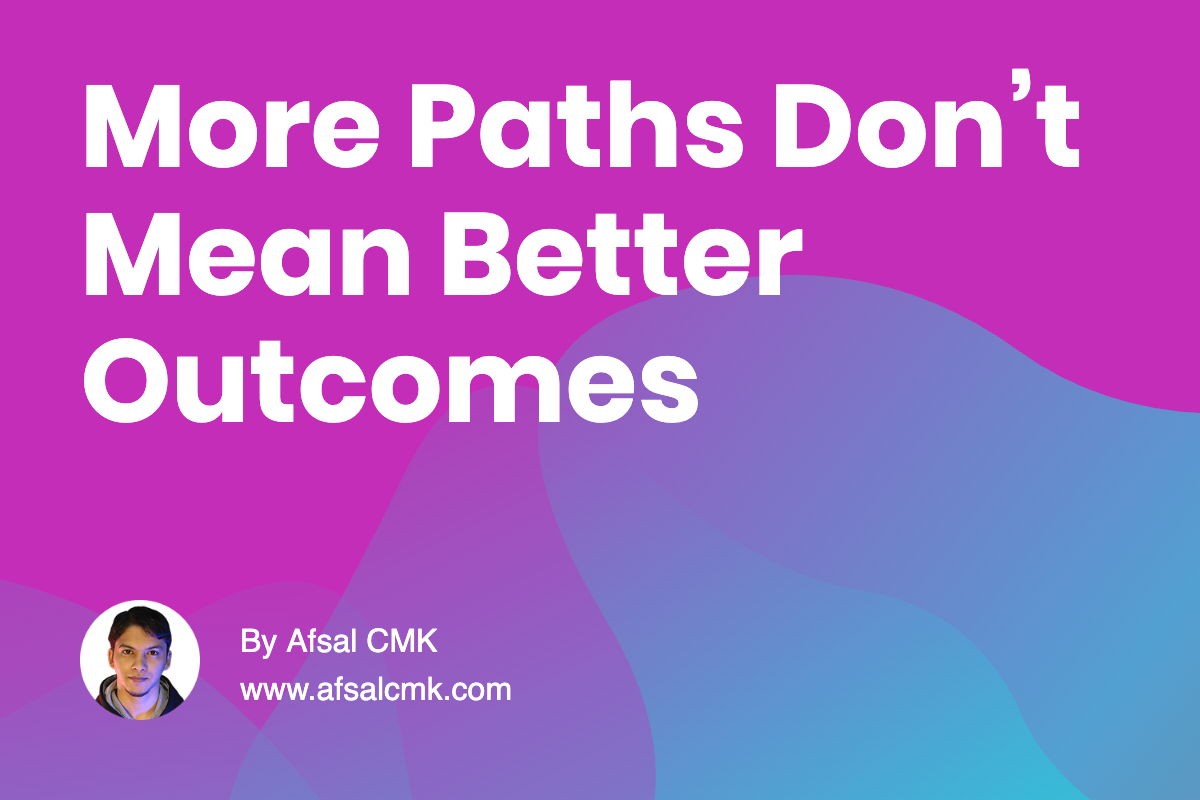
More Paths Don’t Mean Better Outcomes
When you’re mapping UX flows, it’s easy to get lost imagining endless scenarios. Every edge case feels like it deserves a path, every possible variation seems important. Early in my career, I tried to design for everyone at once-and the result was complexity that confused more than it helped. The truth I’ve learned is simpler: most products don’t have infinite scenarios, they have a few core journeys that matter most.
In practice, there’s usually one large set of users who represent the majority. That’s the group you should design around. Other types of users still matter, but unless their combined numbers are significant, they don’t need to dominate your UX flows. Trying to cover every rare situation upfront often bloats the design and slows down decisions, without improving the overall experience.
Instead, focus on the expected paths first and treat secondary scenarios with the right balance of support. This mindset helps you avoid overcomplicating flows while still being mindful of who else might show up. Once you know the main structure, adding optional paths or graceful fallbacks becomes easier.
Here’s how I approach it now:
Start with the common, high-volume user journey-it’s where clarity matters most.Identify secondary scenarios, but size them against real data before over-investing.Design flows that feel flexible enough to handle variation without rewriting the core.Leave room for iteration once you see actual adoption patterns.What I’ve learned is that UX isn’t about drawing every possible path-it’s about structuring the ones that matter most. When you stop chasing endless scenarios and focus on the expected journeys, you get designs that are simpler, clearer, and far more effective for the majority of your users.